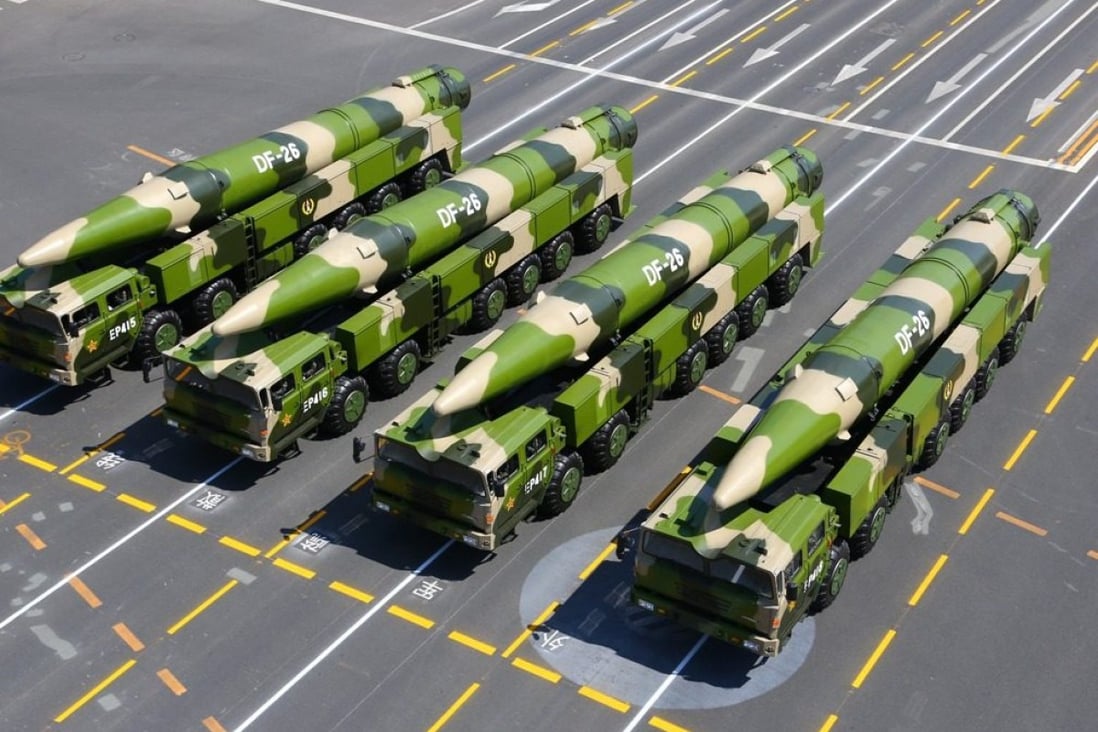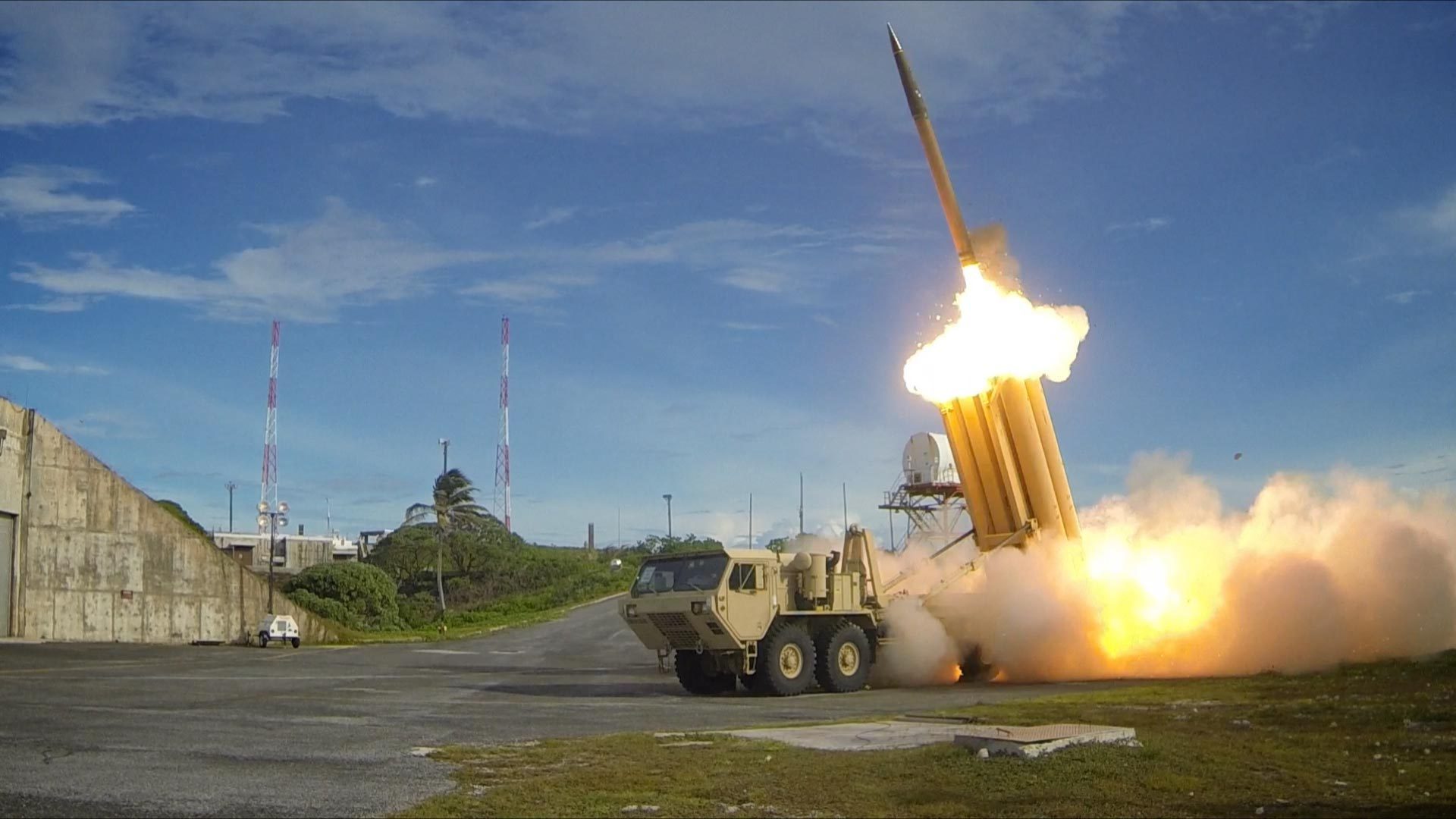China’s DF-26 intermediate-range ballistic missile, which is capable of reaching targets around 3,400 miles away, could pose a threat to key US military installations in the Pacific Rim.
With American military strategists shifting focus to the Indo-Pacific region, Guam, a distant US island in the Pacific Ocean, is assuming greater importance. On October 1, 2020, a US Marine Corps facility in Guam was reactivated after 68 years.
The Marine Corps Installations Command will hold a renaming ceremony at its Asan Beach base on January 27, 2022.
History Happening
Today, Marine Corps Base Camp Blaz became the first Marine Corps base to be activated in 68 years.
The camp symbolizes Guam’s contributions to national security and the continued partnership between the Marine Corps and the Government of Guam. pic.twitter.com/HvNMR15A2D
— U.S. Marines (@USMC) October 1, 2020
The island, which is home to the Andersen Air Force Base and the Apra Naval Base, has long served as a key defense hub from which the United States could project power across the Pacific while keeping its soldiers at a safe distance from possible dangers of North Korea and China.
However, the Chinese DF-26 missile could change these calculations. The communist country unveiled this new missile — dubbed the “Guam Killer” by defense analysts — a few years ago.

In 2016, a US congressional panel issued a report warning of the potential threat from this Chinese missile. The report said it enables China to unleash unparalleled firepower on Guam. The US territory is well within the range of the missile. In 2020, China released a propaganda video depicting a simulated attack on Guam.
The ‘Guam Killer’
China’s People’s Liberation Army sees the US as having a second line of defense east of Japan, with Guam being the most vital base in the Marianas Islands chain. Guam’s Andersen Air Force Base is home to US B-1, B-2, and B-52 strategic bombers, the two of them are capable of delivering nuclear weapons.
Moreover, the Andersen Air Force facility, which occupies much of the northern portion of the island, is the only US base in the Western Pacific capable of housing heavy bombers for an extended duration. Guam would be a highly crucial location during any possible confrontation with China. Submarines departing Guam’s Navy station can dive fast into the deep sea to avoid detection.
China is fully aware that the US base on Guam is the most significant impediment to its ambition to reunite Taiwan. Thus, China’s military prefers a deterrence posture over an aggressive nuclear war strategy since it possesses just a few hundred nuclear bombs compared to US’ thousands of bombs. The DF-26 is the most critical missile in its arsenal for limiting US mobility.
With a range of 1,900 to 2,500 miles, DF-26 can provide Beijing with the capability to strike critical US facilities with a conventional payload weighing up to 3,300 pounds without turning nuclear or exposing its soldiers to dangerous naval warfare.
In addition, the modular warhead might be swapped for novel payloads like Fuel-Air Explosives or runway-cratering submunitions.
The DF-26 can also carry three nuclear warheads that can be separated and fired at different targets. It has an anti-ship variant, the DF-21D medium-range ballistic missile, which has made headlines many times for its reported potential to sink US aircraft carriers. DF-26 Missile has the potential to obstruct US aircraft carrier movements in the vicinity.
China has a wide selection of anti-aircraft carrier weapons like DF-21D and DF-26 "aircraft carrier killer" #missiles. South China Sea is fully within grasp of the #PLA; any US #aircraftcarrier movement in the region is at the pleasure of PLA: analysts. https://t.co/X5L0foka6Q pic.twitter.com/rEPjp9gqAZ
— Global Times (@globaltimesnews) July 4, 2020
The Eurasian Times had earlier reported that China is apparently planning to launch more than 40 space launches in 2022. The country already has a well-connected surveillance satellite system in space to cover areas and bases within the first island chain.
These satellites could be used to gather intelligence about the US aircraft carriers, enhancing China’s ability to launch precision strikes at US assets in the region.
The PLA allegedly also test-fired four DF-26s in a staged strike on a THAADs battery in August 2017, implying that its aim might be to launch a rocket barrage with a “kick-in-the-door” attack to knock out US air defenses.
However, there is no proof that the DF-26 and DF-21D are capable of hitting a moving target at sea, nor that any operational testing has been reported to demonstrate their capabilities. Unless armed with nuclear bombs, the “Guam Killer” in its current configuration, appears to be a weapon for deterrence rather than a potent military threat.
How Will America Counter DF-26?
Over the last decade, the United States has slowly strengthened its position on Guam. After North Korea threatened to fire missiles at Guam in 2013, the US deployed a Terminal High-Altitude Area Defense, or THAAD air defense system to take down ballistic missiles.
According to reports from last year, the US military has tested the Israeli Iron Dome missile defense system on Guam as it prepares to counter potential Chinese threats.
The objective of the US military is to build layers of defense around Guam to block ballistic missiles from space and cruise missiles that fly close to the earth’s surface on a flat trajectory.
Moreover, the new Marine Corps facility in Guam is expected to house roughly 5,000 personnel drawn from Okinawa by the middle of the decade. The Japanese government is contributing $3 billion to the relocation of the Marines, with the US government contributing another $5.7 billion.

In early 2021, the former head of the US’ Indo-Pacific Command urged Congress to construct a new missile defense base in the Pacific as part of a larger strategy to counter China’s military threat to the region. The projected missile defense site is part of the Pacific Deterrence Initiative (PDI).
In December 2021, the United States approved $768 billion for national defense, including $7.1 billion for PDI, an increase of $2.1 billion above the Pentagon’s initial proposal. Both the US and China are rushing to develop counter-measures to one another’s most advanced weaponry.
The United States’ main concern is how to ascertain that any new system would be successful against projected Chinese missile threats. Beijing’s tremendous technological advancement has made this more complex.
- Contact the author at ashishmichel@gmail.com
- Follow EurAsian Times on Google News




